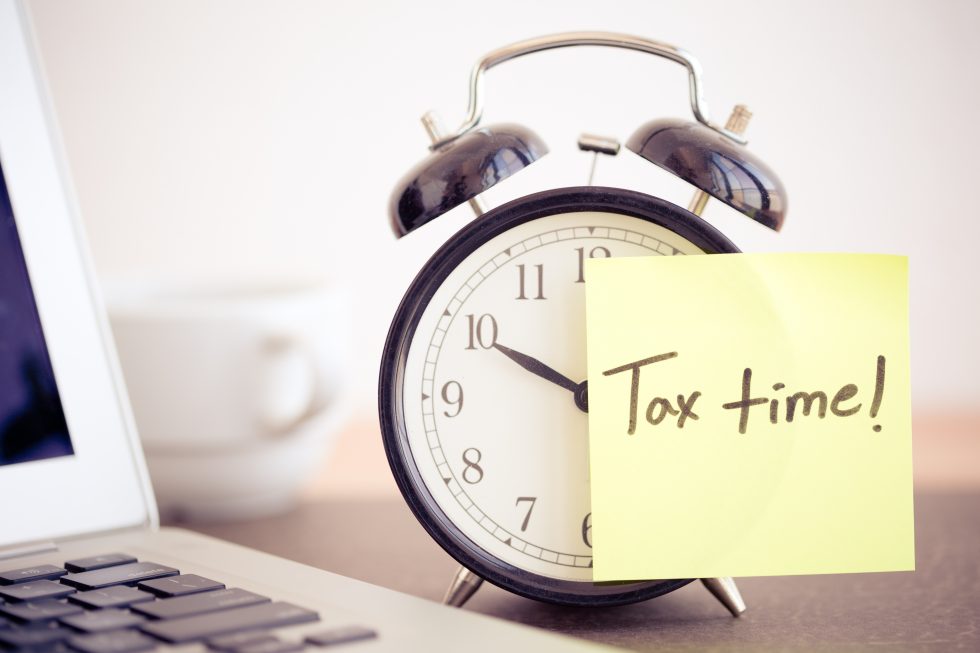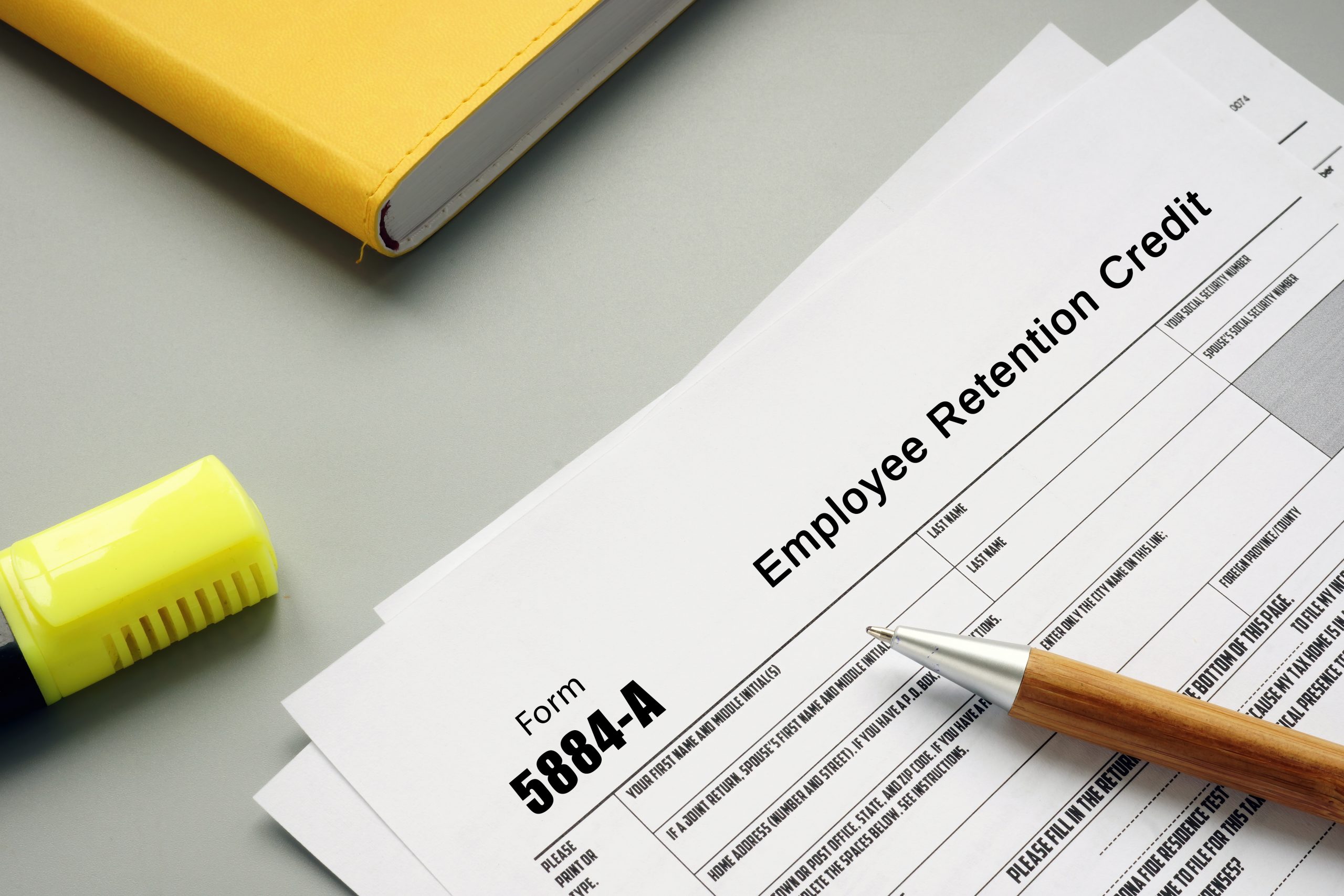
Paycheck Protection Program (PPP) Loan FAQs
Updated May 13, 2020
We know there are many questions regarding the SBA Paycheck Protection Program (PPP) loan. The law itself is ambiguous, and the clarifying guidance that followed has been sparse on details and filled with confusing language. To help guide you through the process, we’ve compiled the following frequently asked questions with our responses.
Key Takeaways
We hope that this summary helps you better understand the details of the PPP loan requirements as we understand them today. The following points should be noted as key takeaways of the information shared below:
- Use your PPP loan proceeds on specifically eligible expenses.
- Use at least 75% of the proceeds on payroll costs.
- Understand the two calculations which can reduce forgiveness.
- Maintain good documentation of the use of funds so you can apply for forgiveness.
HBE Recommended Best Practices for Documentation
- Hold PPP funds in a separate bank account, then pull forgivable costs out of that account as they are incurred which will aid in tracking and supporting your costs.
- Record the proceeds from a PPP loan as a loan on your balance sheet initially. If forgiveness is obtained, then that loan will be transferred as other income through the income statement.
Frequently Asked Questions
In general, who is eligible for the PPP loans?
- Small business concerns, as well as any business concern, or 501(c)(3) nonprofit organization with fewer than 500 employees.
- Individuals who operate a sole proprietorship or as an independent contractor and eligible self-employed individuals.
- To qualify, businesses and entities must have been in operation on February 15, 2020.
What can the loan proceeds be used for?
- The loan proceeds may only be used for payroll costs, mortgage interest payments for obligations, rent payments, utility payments and interest payments on other debt obligations incurred prior to February 15, 2020.
- Of the costs listed above, at least 75% of the proceeds of the loan must be applied to payroll costs.
- Payroll costs consist of gross wages paid (including costs for employee vacation, parental, family, medical, and sick leave), costs related to the continuation of group health care benefits, employer contributions to retirement, and payment of state and local taxes assessed on compensation of employee (state unemployment).
- Mortgage interest costs do not include mortgage prepayment or principal payments.
- Consequently, borrowers should consider developing a plan to make sure adequate controls are in place to maximize the potential usefulness of the loan proceeds and also to prevent the loan proceeds from being misapplied.
How should I hold the funds that I receive to insure compliance with the SBA?
- Holding the loan funds in a separate account may be a convenient way to ensure these funds are not used for purposes not permitted by the SBA. This could make it easier to comply with the restrictions on the use of loan proceeds, and demonstrate and document the use of the proceeds for purposes of forgiveness. Additionally, to the extent the entire loan proceeds are not spent during the covered period, the remaining amount of the funds left in the account could be applied to pay down the unforgiven portion of the loan.
- For some borrowers, it might not be realistic to switch accounts used for payroll. In that case, you could transfer proceeds from the segregated account into the main operating account just prior to the permitted use cost being paid.
- Reminder: You can allocate no more than 25% of the funds for non-payroll costs to stay compliant with the loan forgiveness restrictions.
Help! I need someone to assist me with filling out the PPP & EIDL loan applications. Who do I go to?
- We understand how overwhelming and confusing the SBA PPP and EIDL loan application process can be. At HBE, we have a team of professionals who have been designated to research and stay on top of the changes in filing requirements and guidance from the SBA on a daily basis.
- Our team is happy to help you with gathering information for your SBA PPP and EIDL loan applications. As your trusted advisor, once your applications have been submitted, we will also be there to help you through both the application progress and the forgiveness phase. Please reach out and let us know how we can help.
What happens to any loan proceeds that aren’t forgiven?
- The amount of the loan proceeds that are not forgiven will convert into a loan. The terms of that loan will be 1% and will mature in two years.
- If you follow our segregation suggestions, then any money not spent for qualified costs that is subsequently not forgiven will be immediately available for repayment.
- Keep in mind, any amount of the loan that is not used for a qualified purpose will not be eligible for forgiveness and will need to be repaid.
What documentation will be required to verify expenses that are eligible for loan forgiveness?
- Borrowers will need to provide supporting documentation for all eligible expenses. Therefore, when you receive the funds, it will be best if you already have a system in place to account properly for the funds received.
- While we have not yet received specific guidance on exact documentation that may be required, our current recommendations are as follows:
- Payroll costs calculations. Borrowers should retain any payroll processor records and payroll tax filings during the covered period.
- Cancelled checks, payment receipts, transcripts of accounts and other documentation verifying payments on mortgage obligations, lease and rent payments and utilities.
- To the extent that you use a separate account for the loan proceeds, the bank records from that account will also be useful in establishing how the proceeds were used.
- We would encourage you to reach out to your lenders on what specific documentation they may require when you submit your request for forgiveness.
What are some things that could reduce the forgiveness of my loan?
- There are multiple things that would reduce the forgiveness of your loan, which may include the following:
- Not spending the funds on qualified expenditures, or not spending the funds at all.
- Spending greater than 25% of the forgivable expenses on non-payroll costs.
- Reducing your full-time equivalent (FTE) count.
- Paying an employee less than 75% of what that employee was making in the last completed quarter (this will be the 1st quarter of 2020 in most cases, which is defined as January 1 to March 30, 2020).
- If you receive an EIDL grant of up to $10,000, the grant received will be subtracted from the forgiven PPP loan amount. For example, if you receive a PPP loan for $36,000 (and spend the entire amount in a forgivable manner), and you also receive a $10,000 EIDL grant, the maximum amount of PPP loan forgiveness you can receive is $26,000.
How will I apply for forgiveness?
- Borrowers will be required to submit information supporting their forgiveness calculations. Lenders will review information and then request the forgiveness from the SBA.
- Please note: It will be important to apply for forgiveness as soon as possible to ensure that forgiveness is processed before the six month payment deferment ends. With the extent of this program there will be a lag time between when the borrower submits their forgiveness request and when the request is processed by the SBA.
What other federal COVID-19 relief benefits are impacted by the PPP loan program?
- No employer may receive a PPP loan and also claim the Employee Retention Credit under the CARES Act. If you receive a PPP loan, the credit will need to be paid back to the IRS.
- The deferral of payroll taxes provided for in the CARES Act is not available to any employer that has had a PPP loan forgiven.
- Any sick leave or family leave for which a credit is allowed under the FFCRA will not count toward the total payroll costs calculation for purposes of determining the total forgiveness amount.
How will FTEs be counted when calculating forgiveness?
- Formal guidance on this has not been issued yet. However, we know there will be two options when it comes to calculating your prior FTE count.
- Option 1: Average number of FTEs per month from February 15, 2019, to June 30, 2019.
- Option 2: Average number of FTEs per month from January 1, 2020, to February 29, 2020.
- For employers who have seasonal or part-time staff, their hours will be a very important part of the calculation.
When does the eight week window to spend the PPP funds begin?
- The eight week period begins on the date the lender makes the first disbursement of the PPP loan to the borrower. The lender must make the first disbursement no later than 10 calendar days from the date of approval.
- Additional guidance from the SBA confirms that borrowers will not be able to defer the start of their covered period to a later date. However, it is possible that some lenders will structure the loan as a line of credit. For example, the lender will make an initial advance of a partial amount of the loan proceeds, with additional advances of the loan proceeds to follow over the course of the covered period.
- Important: If you are a summer, seasonal business that would naturally be increasing payroll towards the end of June, we recommend that you talk to your lender about disbursing the funds towards the end of that 10 day window.
I am an employer that had to lay my employees off at the start of the shutdown. How much should I pay my employee when I bring them back to work?
This is a complicated question to answer, but here is our current understanding:
- If you as a borrower reduced your workforce levels due to COVID-19, it is important that you now you make plans to bring your employees back into the workforce.
- If you reduce your FTEs or reduce by 25% the total wages paid to any one employee that makes less than $100,000, your eligible forgiveness will be subject to reduction.
- If you have any reductions in FTEs or total wages that occurs prior to April 26, 2020, but you have reversed before June 30, 2020, you may still be eligible for the full forgiveness amount.
- Please note that the 25% loan proceeds cap on uses for non-payroll costs may make it difficult for you to maximize the use of the loan proceeds and the eligible forgiveness amount without paying the equivalent of eight weeks of your average payroll costs during the covered period.
- To maximize the forgiveness amount, any borrower that does need to make wage cuts during the covered period may consider prioritizing wages cuts for employees making an annual salary above $100,000 first because:
- a) Any amounts paid in excess of $100,000 annually already do not count towards the total payroll costs calculation during the covered period, and
- b) Pay cuts for employees making over $100,000 annually are excluded from the wage reduction forgiveness penalty.
- Another thing to keep in mind is that you will need to pay your employees at least 75% of what they were making in the previously completed quarter. Otherwise, the amount that is less than 75% will not be eligible for forgiveness.
Am I supposed to use PPP funds to pay my employees just to stay at home, or what should I do with my employees when I bring them back?
- The purpose of the program is to have the workforce 100% in place and ready to go when the period of social distancing is over and business can resume.
- That being said, this is a great time to employ your workforce that normally works “in” your business to work “on” your business by doing things you have either put off or have never been able to achieve. This might include jump starting marketing efforts or reaching out to your customers with a personal email or phone call, deep cleaning, organizing your office, training and/or cross-training, working on your strategic plan, brainstorming how to make your processes more efficient, working on your customer relations, or exploring ways to be cost-effective. Be creative with this opportunity to work on your business and make improvements for when this period of social distancing is over.
Is a partner in a partnership eligible for a PPP loan?
- If you are a partner in a partnership, you may not submit a separate PPP loan application for yourself as a self- employed individual. Instead, the self-employment income of general active partners may be reported as a payroll cost, up to $100,000 annualized, on a PPP loan application filed by or on behalf of the partnership.
What can a sole proprietor use the loan proceeds for?
The proceeds of a PPP loan are to be used for the following (within the 8 week period)
- Owner compensation replacement based on 2019 net profit above
- Employee payroll costs if you have employees
- Mortgage interest payments on business mortgage obligations
- Business rent payments
- Business utility payments
How do I calculate the loan proceeds if I am a sole proprietor or independent contractor?
If you have no employees:
- Take net profit from your 2019 Schedule C
- If the amount is over $100,000 reduce it to $100,000, if it is zero or less you are not eligible for a PPP loan
- Calculate the average monthly net profit amount by 12
- Multiply the average monthly net profit by 2.5
- Add the outstanding amount of any EIDL made between January 31, 2020, and April 3, 2020, that you seek to refinance less the amount of an EIDL COVID-19 loan advance
Do businesses owned by large companies with adequate sources of liquidity to support the business's ongoing operations qualify for a PPP loan?
In addition to reviewing applicable affiliation rules to determine eligibility, all borrowers must access their economic need for a PPP loan under the standard established by the CARES Act and the PPP regulations at the time of the loan application. Although the CARES Act suspends the ordinary requirements that borrowers must be unable to obtain credit elsewhere (as defined in section 3(h) of the Small Business Act), borrowers still must certify in good faith that their PPP loan request is necessary. Specifically, before submitting a PPP application, all borrowers should review carefully the certification that “[c]urrent economic uncertainty makes this loan request necessary to support the ongoing operations of the Applicant.” Borrowers must make this certification in good faith, taking into account their current business activity and their ability to access other sources of liquidity sufficient to support their ongoing operations in a manner that is not significantly detrimental to the business. For example, it is unlikely that a public company with substantial market value and access to capital markets will be able to make the required certification in good faith, and such a company should be prepared to demonstrate to SBA, upon request, the basis for its certification.
Lenders may rely on a borrower’s certification regarding the necessity of the loan request. Any borrower that applied for a PPP loan prior to the issuance of this guidance and repays the loan in fully by May 14, 2020 will be deemed by the SBA to have made the required certification in good faith.
Source: Paycheck Protection Program Loans, Frequently Asked Questions, treasury.gov
Will SBA review individual PPP loan files?
Yes, in SBA FAQ #31, SBA reminded all borrowers of an important certification required to obtain a PPP loan. To further ensure PPP loans are limited to eligible borrowers in need, the SBA has decided, in consultation with the Department of the Treasury, that it will review all loans in excess of $2 million, in addition to other loans as appropriate, following the lender’s submission of the borrower’s loan forgiveness application. Additional guidance implementing this procedure will be forthcoming.
The outcome of SBA’s review of loan files will not affect SBA’s guarantee of any loan for which the lender complied with the lender obligations set forth in paragraphs III.3.b(i)-(iii) of the Paycheck Protection Program Rule (April 2, 2020) and further explained in SBA FAQ #1.
Source: Paycheck Protection Program Loans, Frequently Asked Questions, treasury.gov
Will a borrower’s PPP loan forgiveness amount (pursuant to section 1106 of the CARES Act and SBA’s implementing rules and guidance) be reduced if the borrower laid off an employee, offered to rehire the same employee, but the employee declined the offer?
No. As an exercise of the Administrator’s and the Secretary’s authority under Section 1106(d)(6) of the CARES Act to prescribe regulations granting de minimis exemptions from the Act’s limits on loan forgiveness, SBA and Treasury intend to issue an interim final rule excluding laid-off employees whom the borrower offered to rehire (for the same salary/wages and same number of hours) from the CARES Act’s loan forgiveness reduction calculation. The interim final rule will specify that, to qualify for this exception, the borrower must have made a good faith, written offer of rehire, and the employee’s rejection of that offer must be documented by the borrower. Employees and employers should be aware that employees who reject offers of re-employment may forfeit eligibility for continued unemployment compensation.
Source: Paycheck Protection Program Loans, Frequently Asked Questions, treasury.gov
How will SBA review my good-faith certification concerning the necessity of the loan request?
The SBA and Department of Treasury have determined a safe harbor provision that states businesses with PPP loans under $2 million will be deemed to have made the certification in good faith.
For businesses with PPP loans in excess of $2 million the SBA will review the loan and will seek repayment if the certifications for loan necessity are not met. If the borrower repays the loan after receiving notification from SBA, they will not pursue administrative enforcement or referrals to other agencies.
What is the best way to stay current on information regarding the PPP?
- There is a lot of information being distributed related to the PPP loans. At HBE, as your partner in business, we view it as our duty to you to filter through the noise related to this topic and provide you with the information you need.
- You can access the full FAQ document provided by the SBA and Department of Treasury here.
- We will continue to provide updates on federal COVID-19 relief efforts, including changes or revised guidance on SBA lending, as they become available. For additional information, please click here.
- Please reach out to your HBE advisor with any specific questions you may have on how the COVID-19 relief efforts may apply to your individual situation.
This communication and any applicable contents pertaining to COVID-19 employer relief provisions is based on our professional judgment given the facts provided to us and the COVID-19 employer relief provisions guidance as of the date of the communication. Subsequent developments changing the facts provided to us, or differences in the final guidance and regulations once they are issued, may affect the advice provided. These effects may be material.



